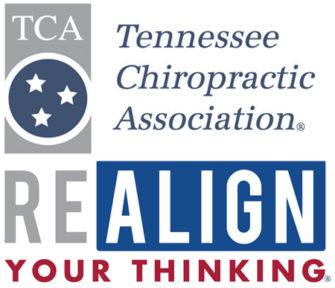What Is The Best Choice For YOU?
 What factors can make or break a successful health strategy? All of them! Every choice you make has the potential to set you up for victory or defeat – medications, surgery, holistic care. But, to pave the way to reaching a health goal, one must consider what is most effective and would bring the least risks, costs, and challenges.
What factors can make or break a successful health strategy? All of them! Every choice you make has the potential to set you up for victory or defeat – medications, surgery, holistic care. But, to pave the way to reaching a health goal, one must consider what is most effective and would bring the least risks, costs, and challenges.
For example, when a person has a splinter, a typical first approach is to use tweezers to carefully remove it. That is the simplest, cheapest method. It is highly effective and has little risk of major complications.
Similarly, health care professionals widely agree that every sneeze and sniffle should no longer be treated with an antibiotic. With each case, prescribers and patients must consider the benefit versus the risk including whether or not the infection is bacterial, the cost of the medication, its risk of side effects, as well as the potential for developing resistance to antibiotics. However, in the instance of a true infection, the same medication can be life-saving.
Choices, such as these, range from simple to very complex. The decision to have back surgery is no exception. Back pain is a major cause of disability worldwide, reducing mobility and making normal activities of daily living difficult or even impossible. There are patients for whom surgery may be the best solution. Still, many people get great results from conservative treatments, such as chiropractic care.
Modern medical advances have improved the techniques and prognosis for those undergoing back surgery; however, it still should not be viewed as a “quick and easy” solution. There are significant risks and complications involved that should be considered.
A study investigated how well different types of surgery worked for patients with lumbar spinal stenosis compared with conservative, non-surgical interventions for the same diagnosis. The authors, who published the study in a 2017 issue of the Clinical Orthopaedics and Related Research, stated that after reviewing a number of studies they concluded that:
“A side effect rate of 10% to 24% for surgery [including spinous process fracture, coronary ischaemia, respiratory distress, haematoma, stroke, risk of reoperation and death due to pulmonary edema] without clearly superior benefit suggests that clinicians should be very careful when informing patients about possible treatment options, especially given that conservative care options had no associated side effects.” (emphasis added)
One side effect that may not be obvious is post-surgery trauma and stress. As medical research gathers more and more data, we are learning that not only is post-traumatic stress disorder (PTSD), a major issue for our military, but it can also be a significant risk for patients undergoing surgery.
New research published in the Canadian Journal of Anesthesia found “Postoperative traumatic stress occurs in approximately 20% of patients following surgery, with additionally elevated rates in specific surgical groups.” Certain factors such as the patient’s perception of the procedure, psychiatric history, complications, medications, and pain, along with other factors, all contribute to a patient’s probability of developing PTSD. Additionally, they found that postoperative traumatic stress can be linked to overall inferior physical and mental health results.
This is not the only study looking at this issue!
A 2012 study published in Spine, evaluated patients undergoing elective lumbar fusion and found PTSD symptoms in 22% of the study subjects. Additionally, these patients experienced “significantly reduced surgical benefit…”.
More recently, a German study taking a slightly different angle found that depressed patients undergoing surgical decompression for degenerative lumbar spinal stenosis, spondylolisthesis or disc herniation took up to 12 months post-surgery to achieve the same disability improvement as their non-depressed peers.
Addressing the risks in advance, as well as better identifying risk factors and other symptoms after surgery, may guide a patient through the post-operative experience and improve interventions to address PTSD. Because the study of PTSD is a comparatively new field, significant additional research on assessment, prevention and treatment is needed. However, consideration of these findings may serve to minimize the negative consequences that can arise from surgery.
When considering a change to reduce pain, fight illness, increase strength or even just improve overall wellness, consider all potential outcomes, both positive and negative, in order to make an informed choice. It is important to ask questions and discuss all options, risks and benefits with your health care provider before making a decision.
Utilizing conservative, non-invasive treatments such as chiropractic care and acupuncture as a 1st choice, can help avoid many of the risks associated with pain medications and surgery. In most cases, YOU HAVE OPTIONS!
Because no two people are exactly the same, there cannot be a single, hard and fast rule for what to do and when. Instead, when approaching a health strategy, doctors and patients must work together to explore how various treatment options would affect the patient in order to make the best possible choice.
Talk to your chiropractor about your health condition, pain levels, and how conservative care can help. After a thorough exam and medical history, your doctor of chiropractic can design a treatment plan specific to you, your current health status and your goals. Chiropractors may also refer to another health care provider when appropriate. Should surgery become necessary, conservative care can help lower the need for opioids and other high-risk pain medications by providing drug-free pain relief before and after a procedure.
If you don’t have a chiropractor, click here to find a TCA member doctor near you!
____________________________________________________________
 This article is being shared as part of TCA’s
This article is being shared as part of TCA’s
“Realign Your Thinking” public-awareness campaign –
helping Tennesseans understand what chiropractic care offers
and the positive role it plays in the overall health care system.
REFERENCES:
El-Gabalawy, R., Sommer, J.L., Pietrzak, R. et al. Post-traumatic stress in the postoperative period: current status and future directions. Can J Anesth/J Can Anesth (2019). https://doi.org/10.1007/s12630-019-01418-4
Hart, Robert, MD*; Perry, Elizabeth, MD†; Hiratzka, Shannon, MPH*; Kane, Marie, MS*; Deisseroth, Kate, MD‡ Post-traumatic Stress Symptoms After Elective Lumbar Arthrodesis are Associated With Reduced Clinical Benefit. Spine: August 01, 2013 – Volume 38 – Issue 17 – p 1508–1515 doi: 10.1097/BRS.0b013e318285f05a
Wagner A, Shiban Y, Wagner C, Aftahy K, Joerger AK, Meyer B, Shiban E. Psychological predictors of quality of life and functional outcome in patients undergoing elective surgery for degenerative lumbar spine disease. Eur Spine J. 2019 Aug 14. doi: 10.1007/s00586-019-06106-x. [Epub ahead of print]
Zaina F, Tomkins-Lane C, Carragee E, Negrini S. Surgical versus non-surgical treatment for lumbar spinal stenosis. Cochrane Database Syst Rev. 2016;2016(1):CD010264. Published 2016 Jan 29. doi:10.1002/14651858.CD010264.pub2